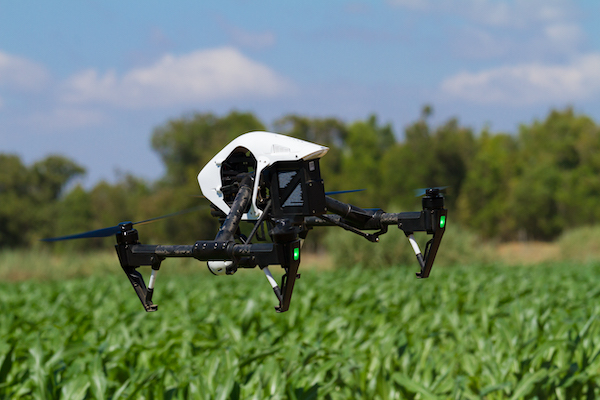While still in their relative infancy in terms of mainstream adoption and application, drones, also known as unmanned aerial vehicles (UAV) or un-crewed aerial vehicles, have already dissolved rigid traditional barriers in industries that were impregnable to similar technological breakthroughs in the past.
This four-part series will look at how drones revolutionized industries that were stagnating or falling behind until recently. Let’s start with the use of drones in the agriculture industry.
Drone Technology in Agriculture
Drones are gaining ground in the agriculture industry. According to some estimates, the agricultural drone industry will reach $4.8 billion in 2024, a $3.2 billion gain from 2019. From surveying to surveillance, drone use on large and small-scale farms will become more prevalent in a few years.
Drones are often used to make agronomic decisions as part of a system known as ‘precision agriculture.’ In fact, they have already become an integral feature of large-scale precision farming operations in many parts of the country.
The information collected by drones monitoring fields assists farmers in planning their planting and treatments to get maximum yield from crops cultivated. According to some statistics, adopting precision farming technology can raise yields by up to 5%, which is a significant increase in an industry with generally thin profit margins.
Here are some of the most common ways drone technology is already being used on farms:
- Soil and Field Analysis: Drones can be beneficial at the beginning of the crop cycle. They generate detailed 3-D maps for early soil analysis, which can be used to determine seed planting patterns. Post planting, they also provide data for irrigation and nitrogen management.
- Planting: Start-ups have now developed drone-planting systems that achieve a 75% uptake rate while cutting planting expenses by as much as 85%. Drone-driven planting systems shoot seed pods containing essential nutrients directly into the soil, providing the plant with all of the nutrients it needs to grow.
- Crop Spraying: Distance-measuring equipment, or “DME”, such as the laser beams used in the light-detection and ranging (LiDAR) system, allows a drone to adjust its flying height as topography changes, thereby preventing collisions. As a result, crop spraying with drones can ensure even coverage; efficiency goes up while the amount of chemicals polluting groundwater goes down. According to experts, aerial spraying with drones can also be done up to five times faster than traditional methods.
- Crop Monitoring: The combination of vast fields and limited crop monitoring efficiency is one of the biggest challenges in farming. Unpredictable weather conditions only add to the risk and field maintenance expenses, exacerbating the monitoring challenges.
- Up until fairly recently, satellite imagery was the most advanced form of crop monitoring. However, it had its fair share of downsides, images had to be ordered ahead of time, could only be taken once a day, and were unreliable. Furthermore, satellite imagery was extremely expensive. Time-series animations can now display the precise growth of a crop and uncover bottlenecks in production, allowing for better crop management.
- Irrigation: Drones equipped with specialized sensors, hyperspectral imaging, multispectral imaging, or thermal imaging can detect which portions of a field are dry or need treatment. Furthermore, once the crop is developing, drones can calculate the vegetation index (the relative density and health of the crop) and show the heat signature (the amount of energy or heat emitted by the crop).
- Health assessment: It is critical to evaluate crop health and detect bacterial or fungal infections on trees. By scanning a crop with both visible and near-infrared light, drone-borne equipment can reliably detect which plants reflect different amounts of green light and near-infrared light. This data can be used to generate multispectral images that track changes in plants and indicate their health.
- Furthermore, if an infection is identified, farmers can more precisely apply and monitor treatments. These two options improve a plant’s ability to resist disease. Also, in the event of crop failure, the farmer will be able to document damages for insurance payments more efficiently.
Drone technology will give the agriculture industry a high-tech facelift, and high-resolution optics will enable them to do so. To learn more about custom lenses for drones, contact the engineers at Universe Optics today.